A Book for a Book Review
Three old books came across my desk this week, rescued from years of likely abandonment on an Op Shop shelf. They are all acknowledged as classics in the Sailing genre, but it’s interesting to see how much of the content remains relevant today and how much becomes just quaint outdated anecdotes.
And as the shelves of our library are bending under the weight of too many books, we thought we would like to give these three away.
So, the first three readers to submit their own review, telling the SWS readership about a book they have enjoyed or perhaps been challenged by, will receive one of these classics in the post. You don’t have to be in Australia. We have readers from Portugal to Paraguay. And the subject matter doesn’t have to be strictly wooden sailing boats. Anything vaguely maritime will do, however tenuous. When you submit your review, include a few pictures of the book, make it personal and say what you really think! So, to get the ball rolling here are the trio of Sailing Literature Classics waiting for a new custodian.
Voyaging under Sail
Eric C. Hiscock
Oxford University Press
First Edition 1959
This Edition 1969
Condition Good


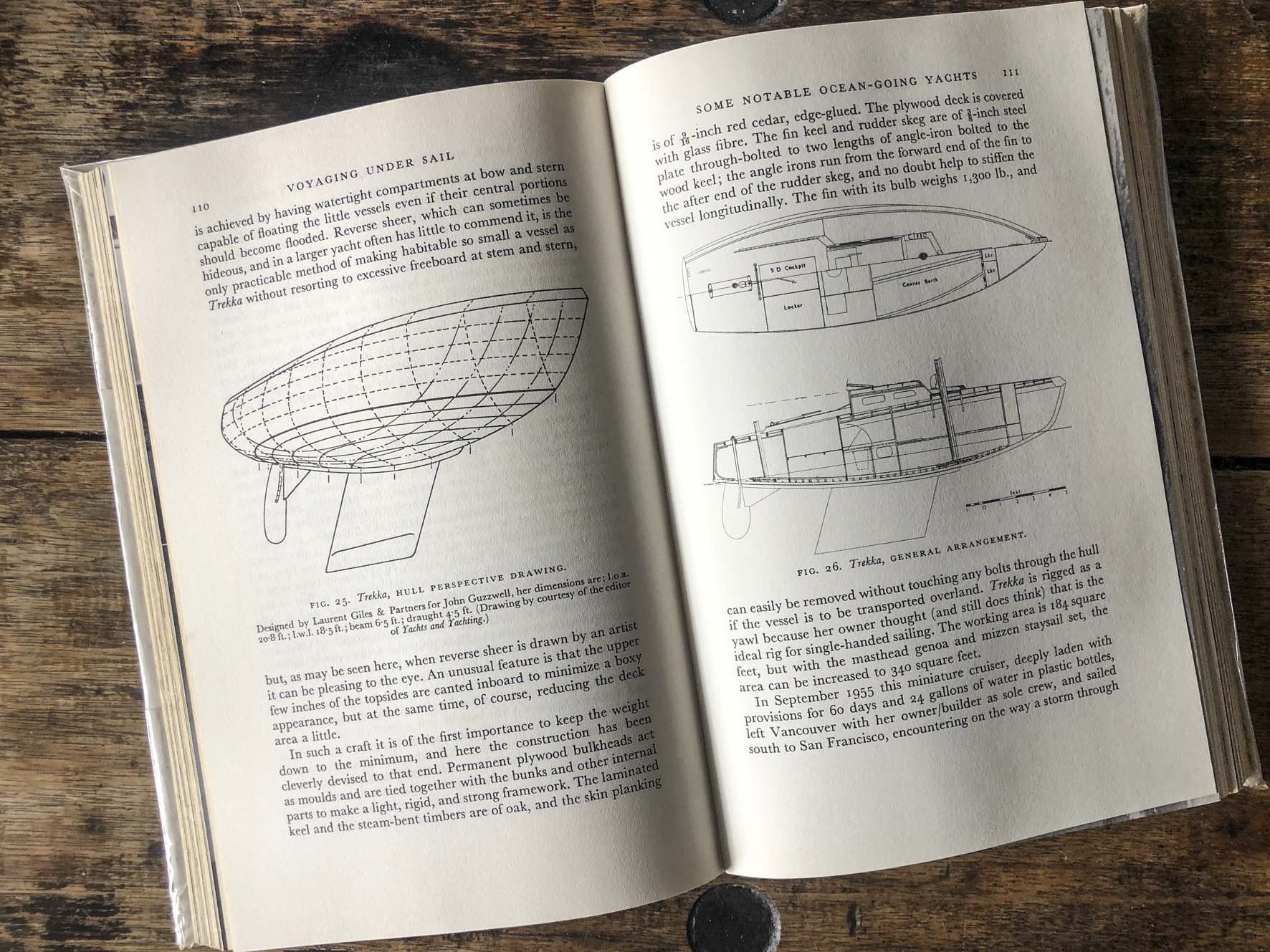
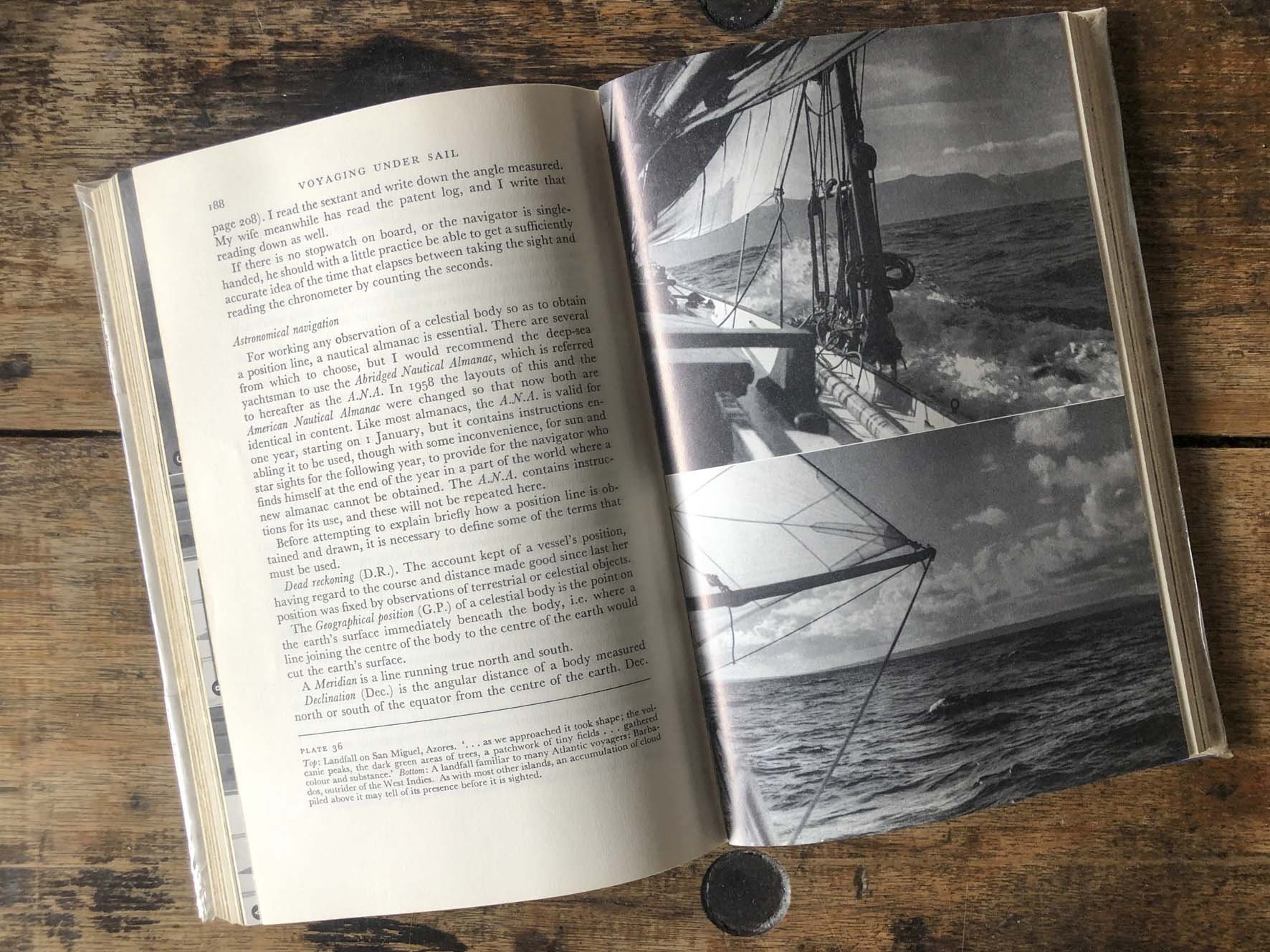
Eric and Susan Hiscock were the most famous of the cruising couples who popularized ocean voyaging as a lifestyle. They were also the first ones who were able to make that lifestyle financially viable through their writing and lecturing. Beginning their first circumnavigation in 1952, they circumnavigated twice more during the next 25 years.
“Voyaging Under Sail” is the sequel to Hiscock’s more famous book “Cruising Under Sail”.
It was written for sailors who were planning to make a more substantial passage. It’s based on the author’s own experience and gives a wealth of practical information on the planning and execution of long voyages.
Together Eric and Susan wrote more than 12 books and became the go to source to generations of sailors. Both were born on the Isle of Wight, England. Eric’s first boat was a wooden, gaff-rigged, 18-foot sloop built in 1890. It was named WANDERER and for as long as he sailed that was the name that he gave to all his boats. Eric enjoyed the boat so much that he approached the young Laurent Giles to have him design a 25-foot wooden sloop. Unfortunately, Hiscock couldn’t afford to have the boat built so Giles cut down the size of the boat and Hiscock built a 21-foot version. It was on that boat, WANDERER II, that Eric and his new bride, Susan, took their honeymoon trip to the Azores and then cruised the coast of Spain and France.
Eric had been in the Royal Navy for two years during World War II when he was discharged because of bad eyesight. He was informed by a commanding officer that he “was half blind.” It was because of his poor eyesight that his cruises before the war were short as navigation was difficult, but when he met and married Susan all that changed. “I realize now,” he wrote later, “that I have married the perfect crew.” They enjoyed voyaging so much, they went back to Giles and had him draw lines for a 30-foot marconi-rigged sloop called WANDERER III. On this vessel they installed a 4-hp diesel and a fuel tank that gave them a 50-mile range.
It was aboard WANDERER III that the Hiscocks spent the next 17 years circumnavigating the globe twice becoming the first couple to accomplish that feat. Eric equipped both WANDERER III and his next boat, the steel WANDERER IV, with a darkroom in the forepeak.
Eric Hiscock passed away aboard WANDERER V in New Zealand at age 78 in 1986. Susan returned to the Isle of Wight, bought a small cottage, living ashore until her own passing in 1995. She was so extraordinary that she won her first small boat sailing race when she was 78 years old.
Much of what is found in this book might seem anachronistic. There are chapters on “Celestial Navigation” and “Colour Photography”, but then so much of the content is still relevant today. Whatever boat you choose to sail in, learning about things like “the Welfare of the Crew” and “General Seamanship” from a couple who have walked the walk, is surely a timeless pleasure!
Heavy Weather Sailing
K Adlard Coles
Granada
First Edition 1967
This Edition 1980
Condition Fair
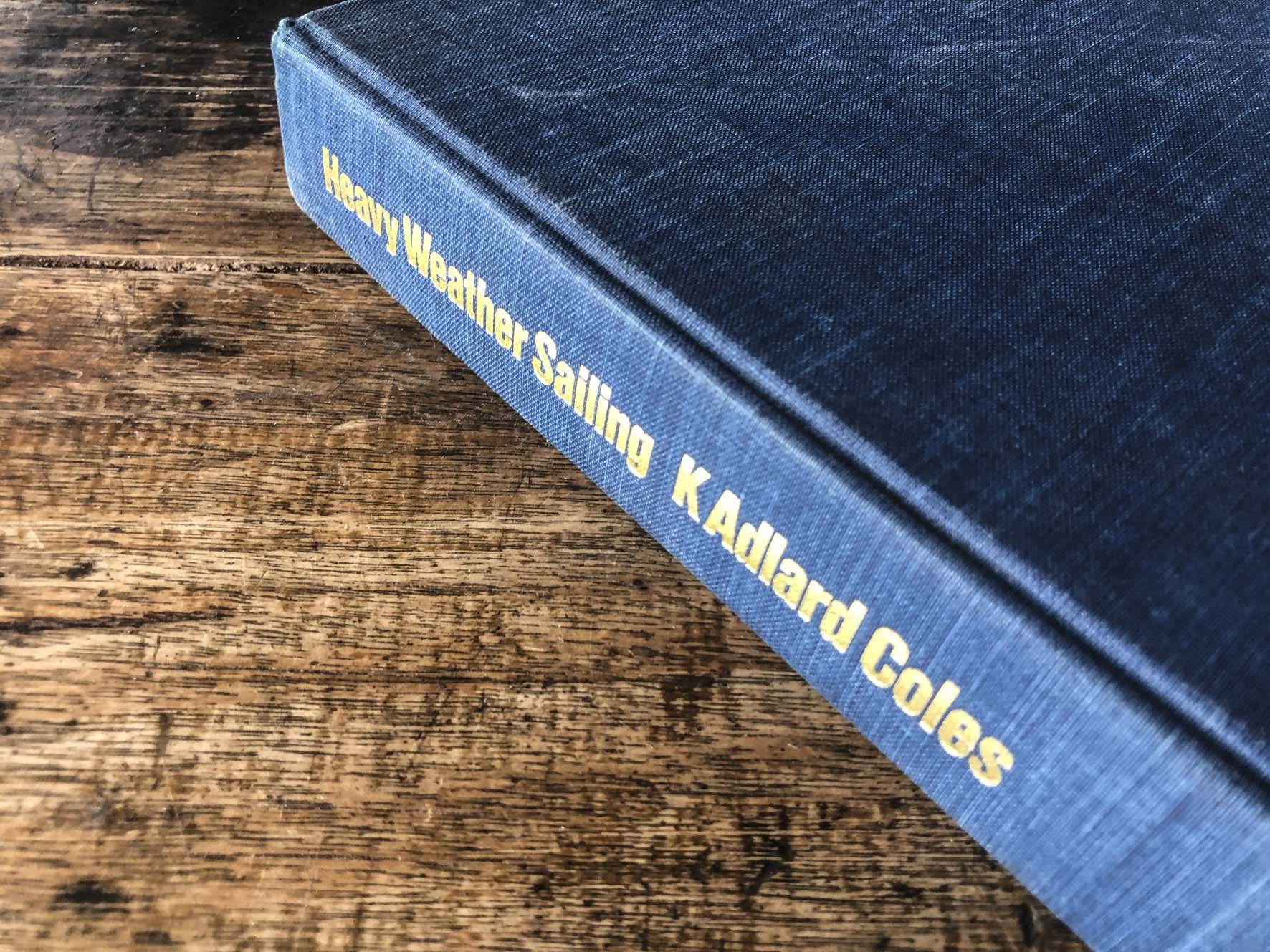
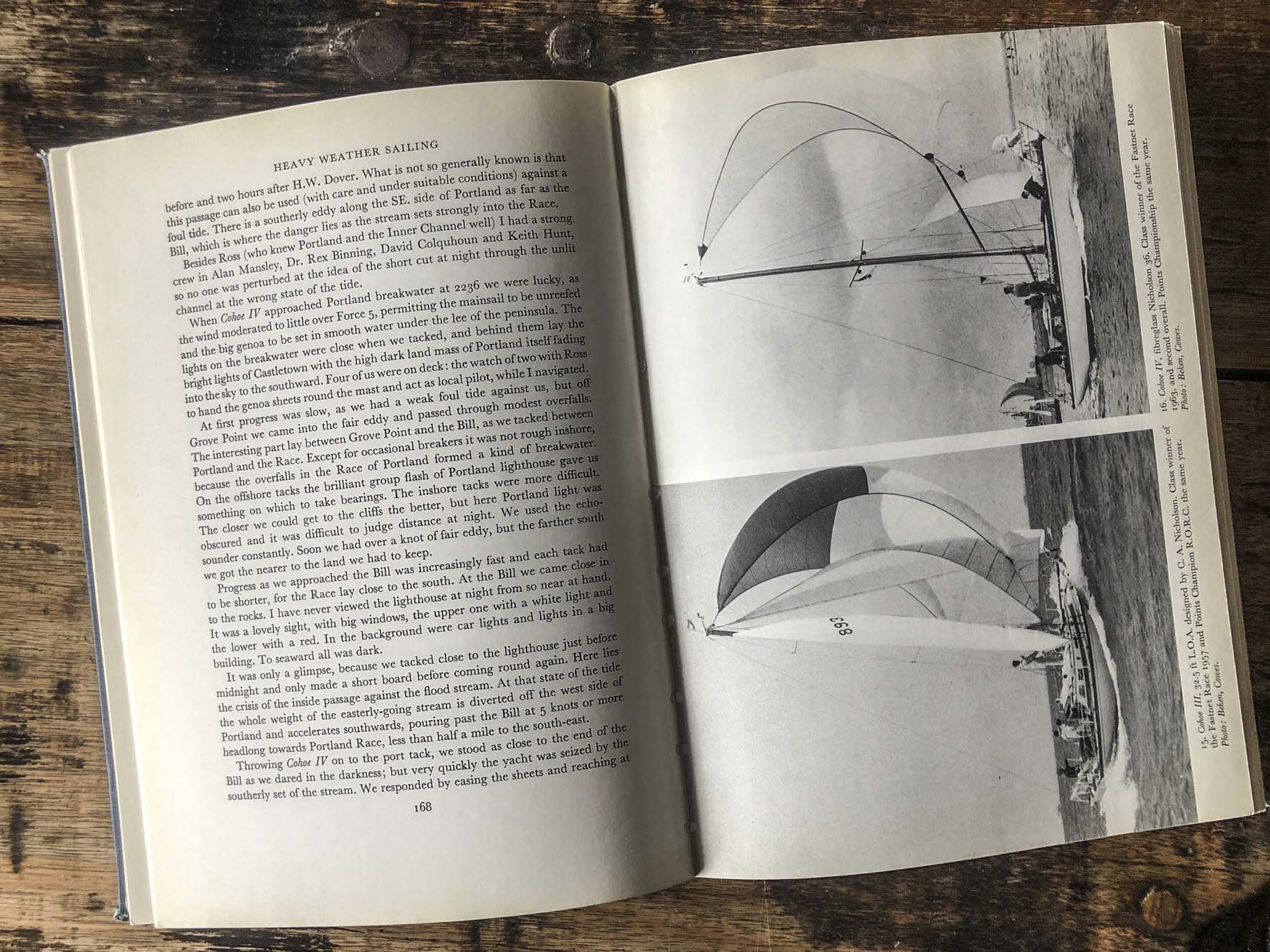

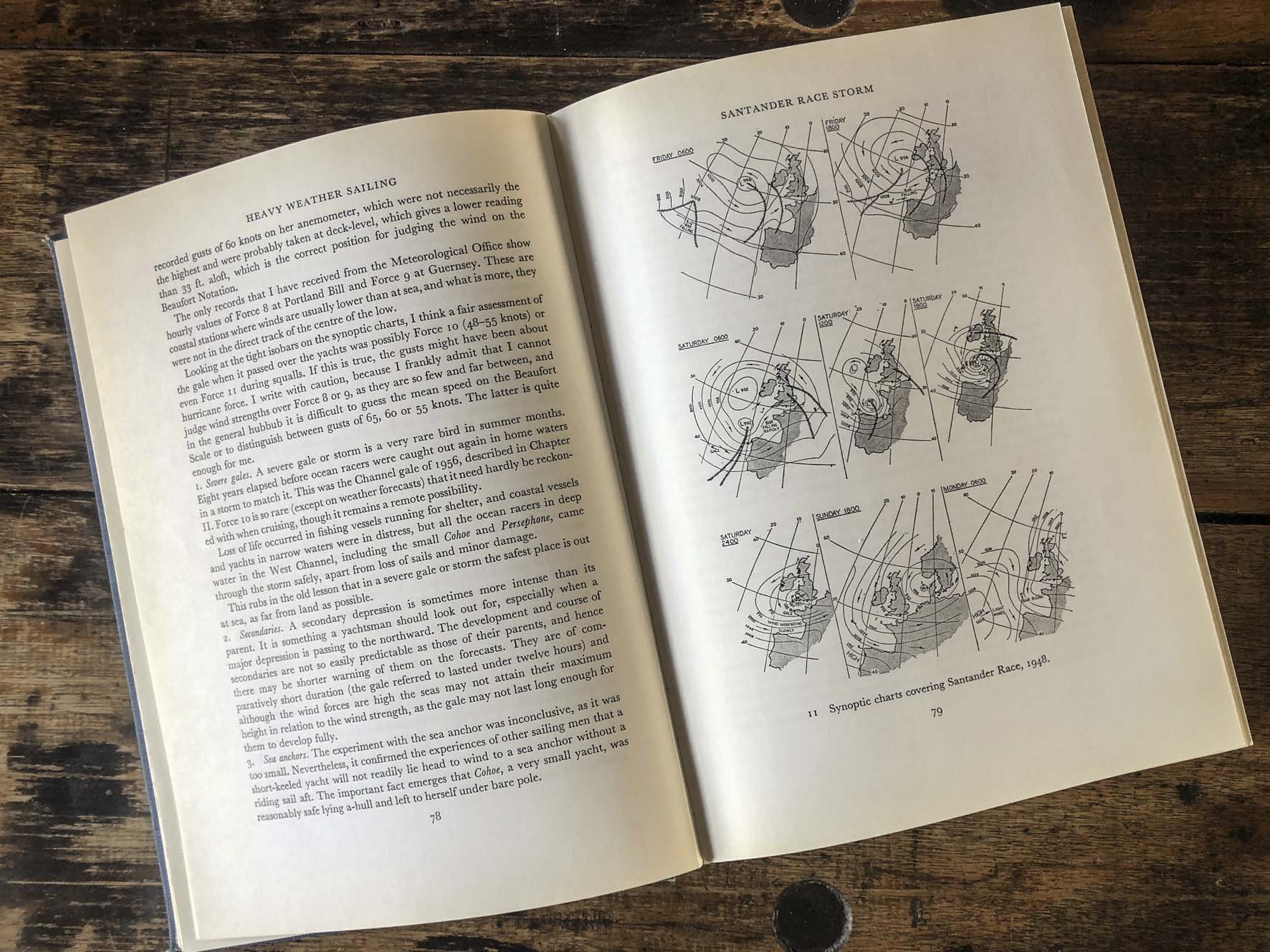
From Classic Boat Magazine- When Adlard Coles wrote Heavy Weather Sailing in 1967, I doubt he expected it to become the definitive work on the topic, nor that it would remain in print, through several editions and with the help of Peter Bruce, for 50 years.
Since the 1960s, yacht ownership has grown rapidly and services and facilities that support yachting have grown to match. With the advent of new materials, yachts can be made lighter and stronger and advances in communications mean no one needs ever be out of touch. Harbour and marina developments mean that, at least in our waters, many parts of the coastline have safe havens where none existed before and RNLI and independent lifeboats use modern technology to reach casualties at sea faster than ever. Yachting is not a dangerous pastime.
However, wind and wave are potentially as dangerous as ever and it behoves us all to face the fact that one day our ability to cope may make the difference between life and death. This is why we should all study this book.
The second sectionof the book includes many accounts of heavy weather written by experienced sailors. They describe conditions all of us would choose to avoid, but as so often happens at sea there is no possibility of getting off – one just has to cope. The clarity and objectivity of the writing is remarkable as is the courage and resourcefulness of the writers. Each account is followed by the author’s comments, which draw out the pertinent points for the reader to consider. What is abundantly clear is that those who coped best knew their boats well and prepared them and their crews with care.
In Adlard Coles’ time, yachts were predominantly heavy displacement and long keeled and would heave-to well. In extremis they could run under bare poles or lie a’hull and take the punishment. Lighter displacement and shorter keels mean that many modern boats handle quite differently and heaving to or running may not be the best option. Sailing to windward under flat-cut storm jib or trysail is a possibility rarely considered in earlier days.
All storms are slightly different but this book has the knowledge to help you get through. With information drawn from a wide variety of sources from yachting legend Olin Stephens, to those who have survived terrible times at sea, this book ties together many facts and presents them in a readable and informative manner. With chapters on weather prediction and how to survive the worst that the skies and seas throw at you, this title should be on every sailor’s reading list.
Sailing Alone Around the World
Capt. Joshua Slocum
Sheridan House
First Edition 1899
This Edition 1954
Condition Good
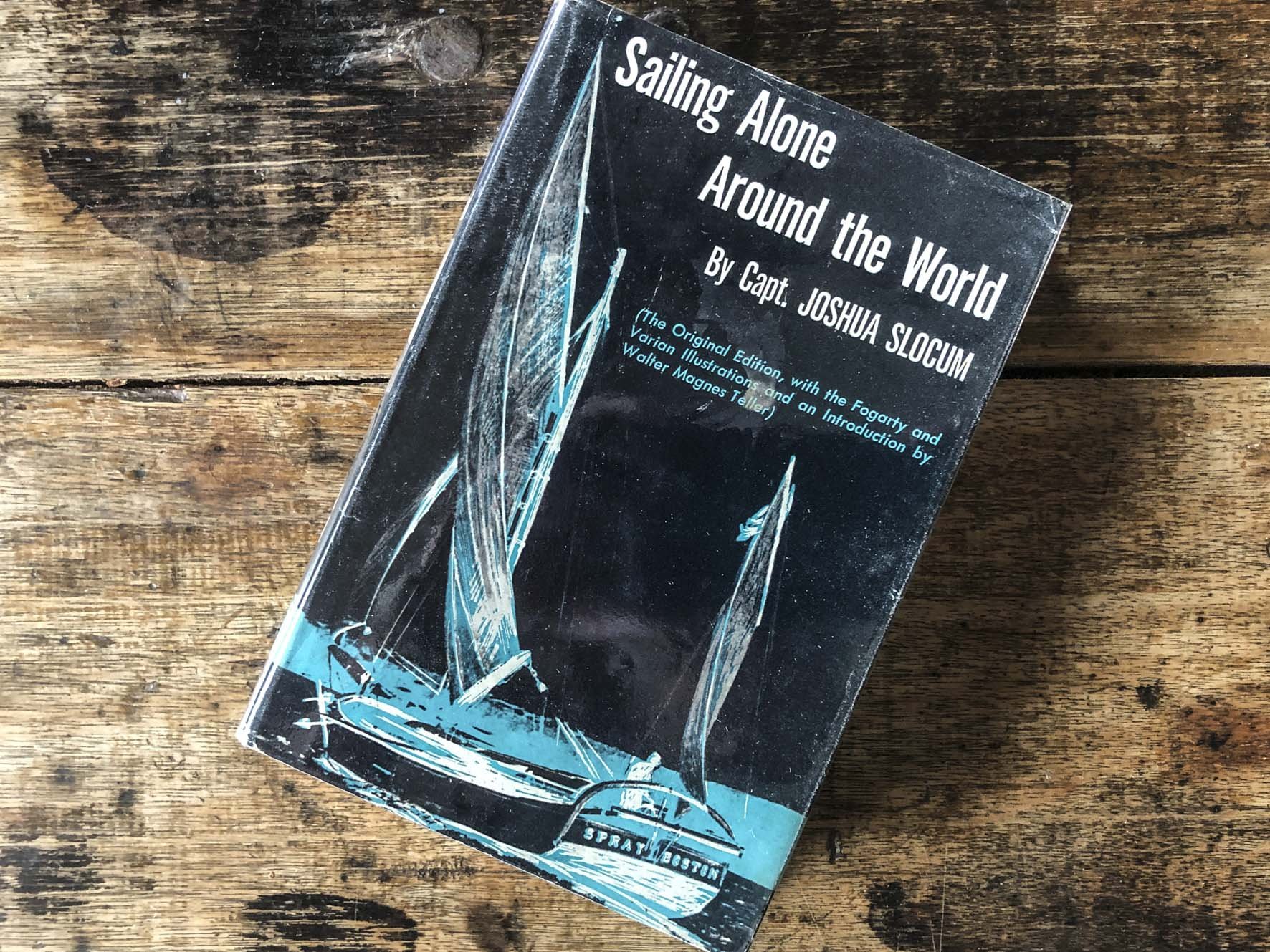
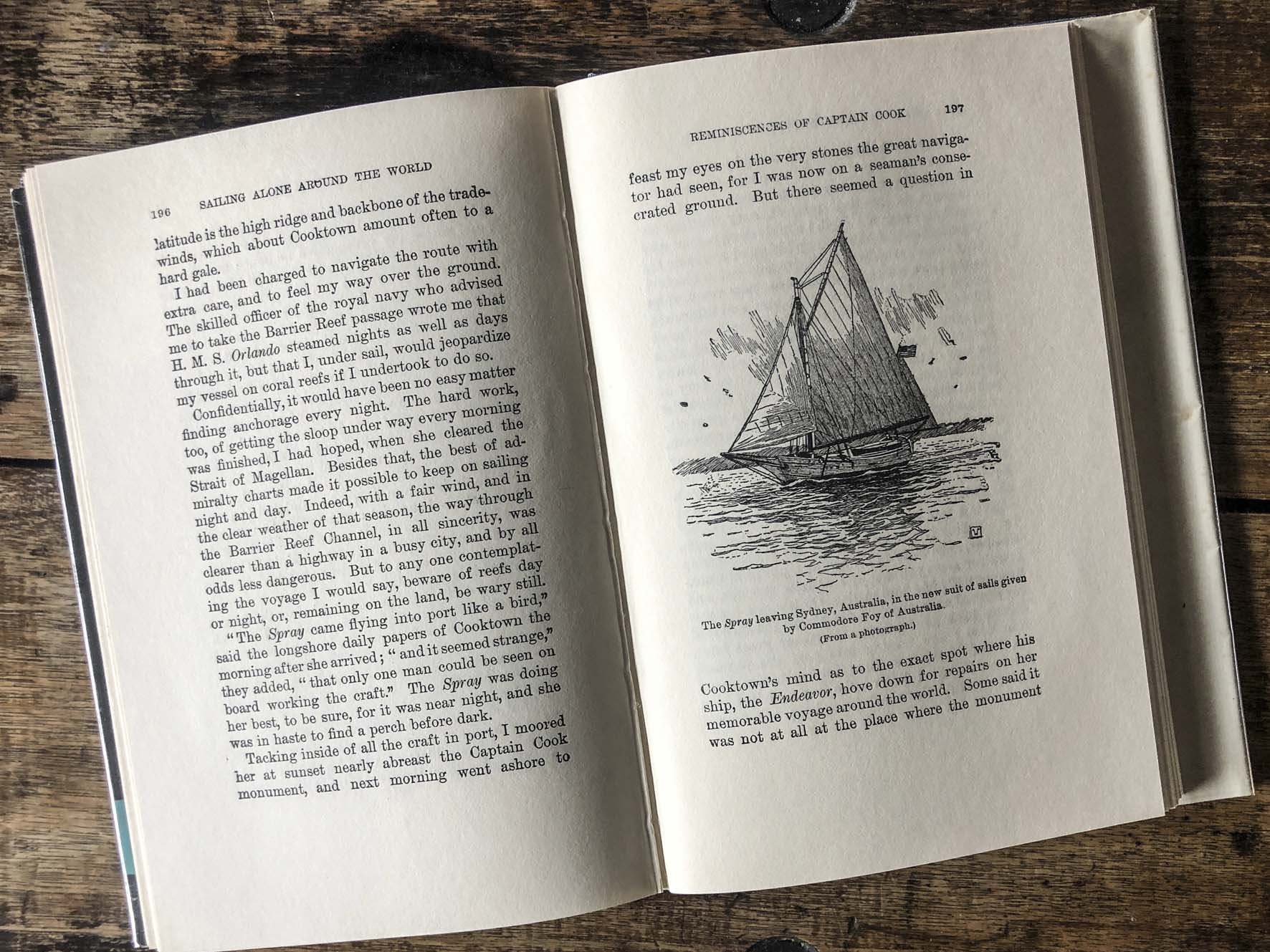

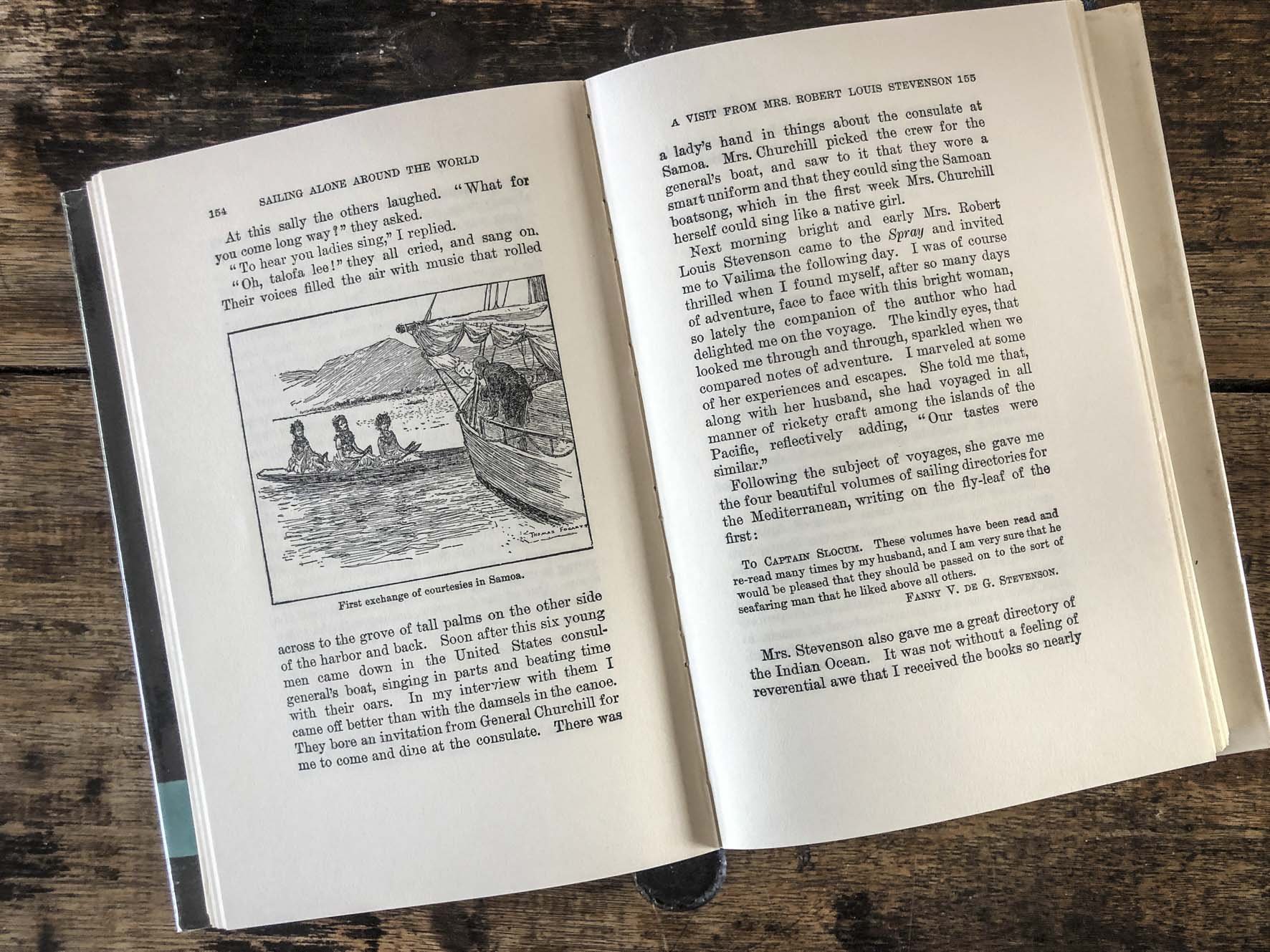
If you haven’t read this book before now might be a good time to do so as, surely it’s in line to be cancelled, and not without some justification. In May 1906, less than a decade after his famous voyage, Slocum was arrested and charged with raping a 12-year-old girl. He spent 42 days in jail before accepting a lesser charge of indecent assault. (The alleged incident was eventually downgraded to a “great indiscretion.”). Whatever historical lens you put on this behavior there can be no excuses. But whether this should colour the reading of what has over the last centuary become a true Classic is too big a subject for this SWS article.
First published in 1900 and in continuous publication ever since, Joshua Slocum’s memoir of his solo circumnavigation of the world is a classic in nautical literature. The first person to complete a solo circumnavigation of the world, Slocum was already an experienced sailor prior to his journey. After purchasing and refitting the derelict sloop, SPRAY, Joshua Slocum departed Massachusetts on 24 April 1895 on a journey around the world that would take him more than three years to complete. His voyage ultimately took him across the Atlantic three times, and he visited various far off places in South America, the Pacific Ocean, Australia, the Indian Ocean, Africa, and the Caribbean. He finally returned home to Fairhaven, Massachusetts on 27 June 1898.
Throughout his voyage, Slocum was well-received by many of the places that he visited, but he also had to deal with the common problems that many solo adventurers encounter, such as fatigue, boredom, and isolation. Not to mention the various natural dangers at sea, as well. Thankfully, Slocum seems very much at home on the water and noted that the design of the Spray allowed her to run easily before the wind and self-steer. Indeed, there were times when Slocum simply lashed the helm and the Spray held her course fast for hours or days on end. At other times, Slocum had to outrun pirates and ward off attacks by the natives off Tierra del Fuego. In another interesting note, while sailing up the coast of South America in May of 1898, Slocum encountered the battleship USS Oregon on her way to the Caribbean for the Spanish-American War. I particularly enjoyed his accounts of his visits to Melbourne and Sydney.
Naturally, some of the incidents in the book are a bit hard to swallow. The most famous one occurs after Slocum fell ill with food poisoning after eating plums and cheese. In a fever dream, Slocum claims that he saw an apparition of the pilot of the PINTA; one of the vessels that was part of Christopher Columbus’ famous voyage. The pilot, apparently fluent in 19th-century English, reassured Slocum that he would steer the SPRAY while he recovered. Perhaps Slocum really did hallucinate his meeting with the pilot while in his delirious state, but most accept that Slocum was taking some artistic license with his work.
The book is filled with many interesting stories of distant lands and exotic people. I wouldn’t call it a thrilling read, but it’s really about one man’s solo voyage. Slocum’s writing is simple and easy to understand. In some ways, it has hints of the ideas of the transcendentalist philosophers of the mid-1800s. Slocum’s story is a classic sea adventure about a man, a boat, the oceans, and the world.
SUBMIT YOUR BOOK REVIEW HERE
Thanks to Marianne Findlay for passing on these volumes!

